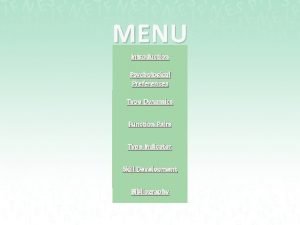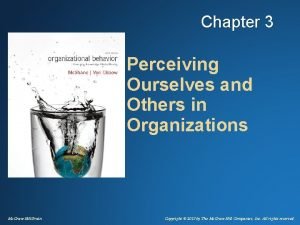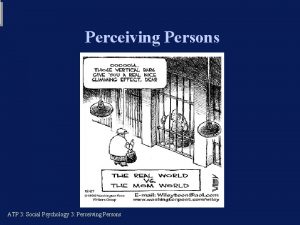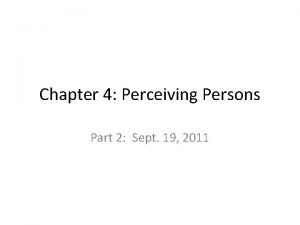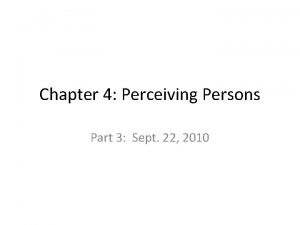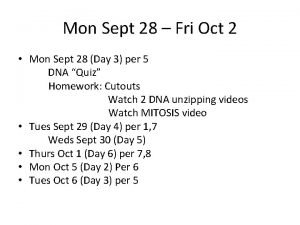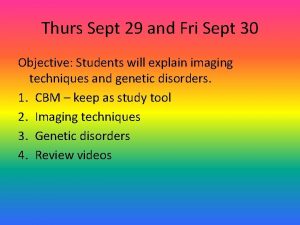Ch 4 Perceiving Persons Part 1 Fri Sept







- Slides: 7

Ch 4: Perceiving Persons Part 1: Fri. Sept. 16, 2011

Social Perception • Get info from people, situations, & behavior – We make quick 1 st impressions of people • Attempt to read traits from faces – Baby-faced vs. mature features – Is there an evolutionary need? – Situations – • Scripts

Situations & Behavior – Use situational cues to interpret behavior • Behavior & social perception: – Derive meaning from physical behavior – Includes nonverbal behavior • 6 primary universal emotions – what are they? – Facial expressions across cultures – results? – Matsumoto’s research – results?

Nonverbal Behavior • Importance of eye contact & touch – Interpretation of avoiding eye contact? • Differences in nonverbal cues across cultures – Examples?

Detecting Deception • Can we use this info to detect deception? – Facial versus body movements • What leads to better accuracy? – Not much better than 50/50 chance • see Table 4. 2 in book

Microexpression Research – Paul Ekman: • What are microexpressions? • Examples of contempt, disgust… – Apply to security screening situations - how do these work? • High cognitive effort tasks • Strategic disclosure

Attributions • Attribution = explanation about a behavior – Heider – personal vs. situational – Attribution theories: • 1. Jones – Correspondent Inference theory: – Infer from action : 1. Did the person have a choice? 2. Was the behavior expected? 3. How many positive effects were there?

